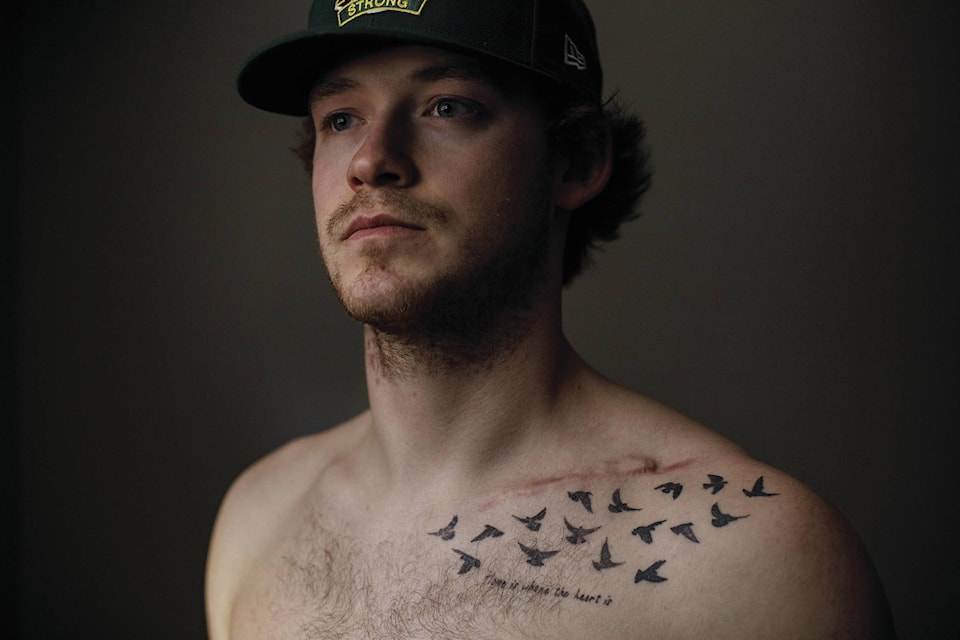HUMBOLDT, Sask. — Sixteen people were killed and 13 were injured a year ago when a semi-truck and a bus carrying the Humboldt Broncos junior hockey team collided in rural Saskatchewan. An inexperienced truck driver who blew a stop sign, causing the crash, was recently sentenced to eight years in prison.
Here’s a look at several legacies that came out of the tragedy:
Organ donation
In the days after the crash, the Logan Boulet Effect was born.
The family of Boulet, a 21-year old defenceman from Lethbridge, Alta., donated his organs because he had made his intentions clear.
Six people across Canada benefited and soon others followed his lead. Nearly 100,000 Canadians signed up to become organ donors after learning Boulet had signed his.
Canadian Blood Services said there were 99,742 registrations in April 2018 — a number that only includes provinces with online registration: British Columbia, Alberta, Manitoba, Ontario, Quebec, and Prince Edward Island. Other provinces reported receiving many phone calls from people wanting to register.
The rest of the 2018 statistics have not yet been compiled.
An event called Green Shirt Day — similar to Pink Shirt Day for anti-bullying and Orange Shirt Day for reconciliation — will be held Sunday, April 7, the anniversary of Boulet’s death, to promote organ donation registration.
Toby Boulet, Logan’s father, said the movement is bigger than his son.
“There are many, many people who are passing because there’s not enough organs to go around or they don’t match,” he said at a recent event in Lethbridge. “That’s not what needs to happen. It has to be better than that.”
Seatbelts on buses
A movement dubbed Buckle Up for the Broncos started in September after one player’s mother wrote an opinion piece that ran in newspapers across the country.
Tricia Wack of St. Albert, Alta., whose son Stephen died, addressed seatbelt use on buses, and a Saskatchewan coroner’s report on the crash called for mandatory seatbelts on highway buses.
Hockey Canada, the national governing body for the sport, said it hasn’t made any changes since the crash but continues to discuss the issue internally.
Truck safety
The Alberta, Saskatchewan and Manitoba governments have all introduced mandatory training for semi-truck drivers after the Humboldt Broncos bus crash.
Before the crash, Ontario was the only province that had mandatory truck driver training.
Drivers seeking a Class 1 commercial licence in Saskatchewan are now required to undergo at least 121 1/2 hours of training. There’s also a 12-month safety monitoring program for drivers in effect.
In Alberta, similar requirements have come in and all new commercial carriers must prove they comply with transportation safety regulations before they start operating.
Alberta and Saskatchewan’s mandatory training went into effect last month, although Alberta extended the deadline by a year for farm workers.
Starting Sept. 1, commercial truck drivers in Manitoba will also be required to complete 121 1/2 hours of training.
